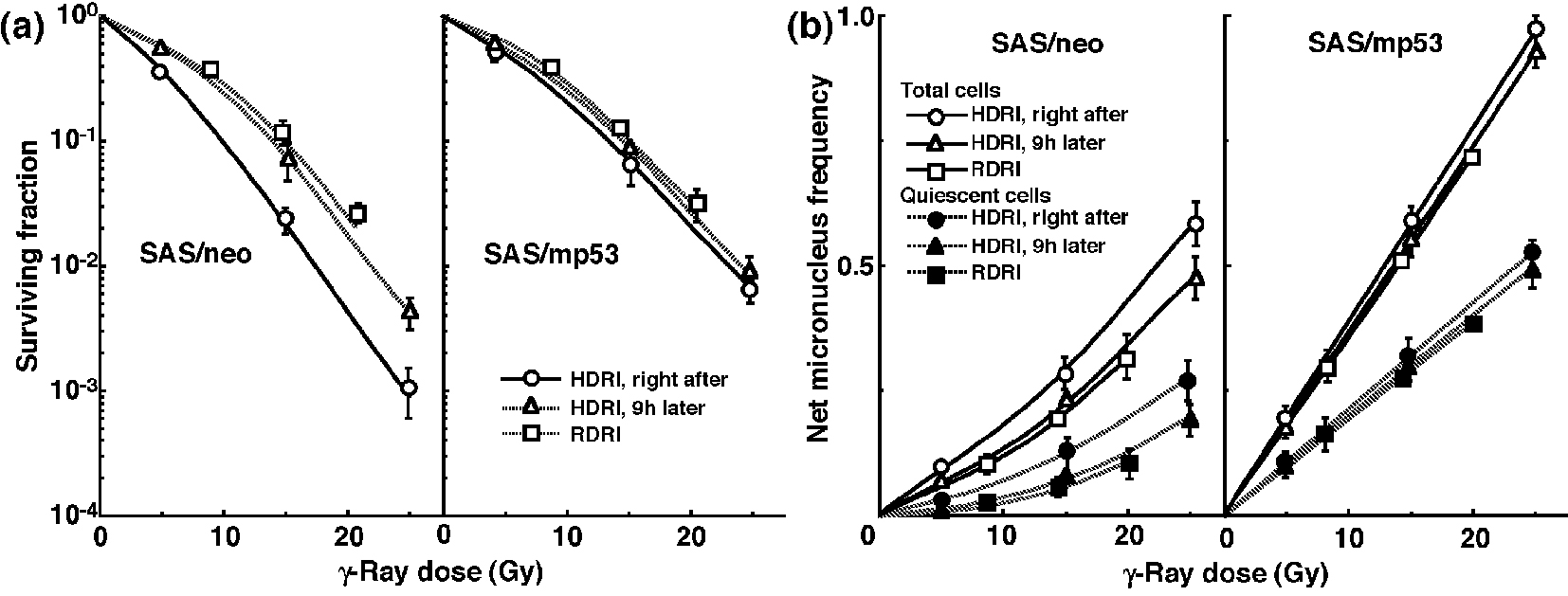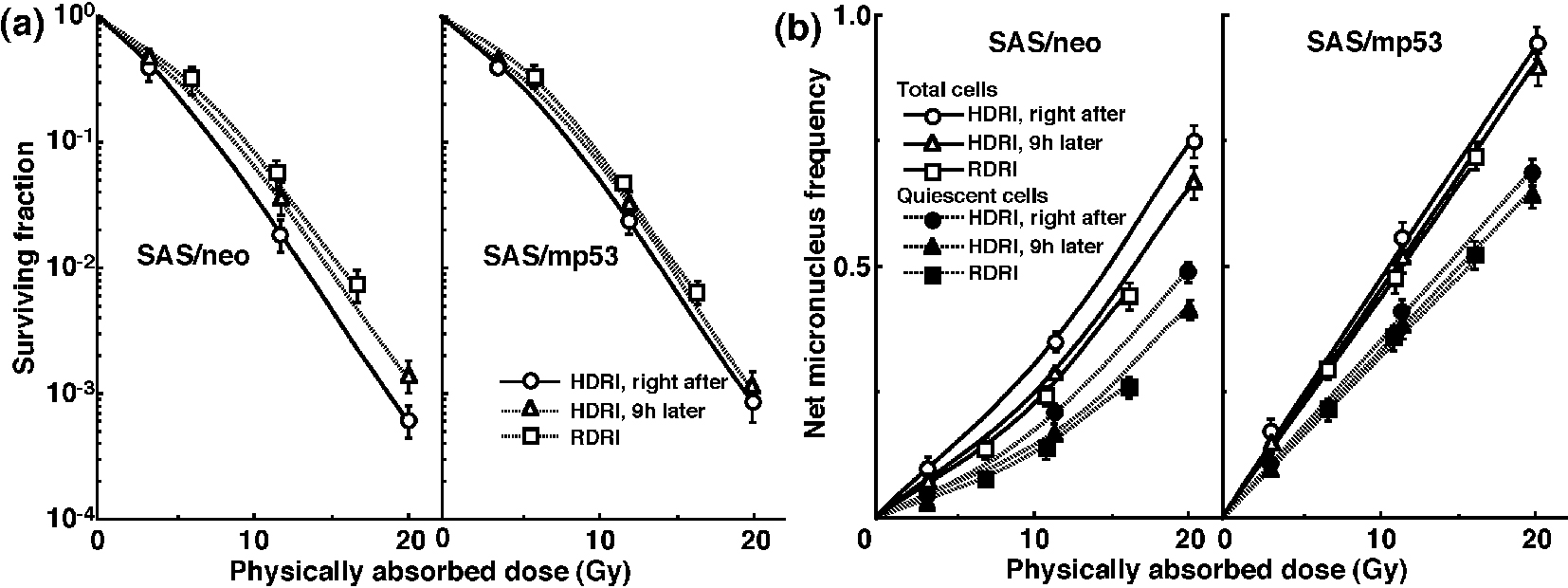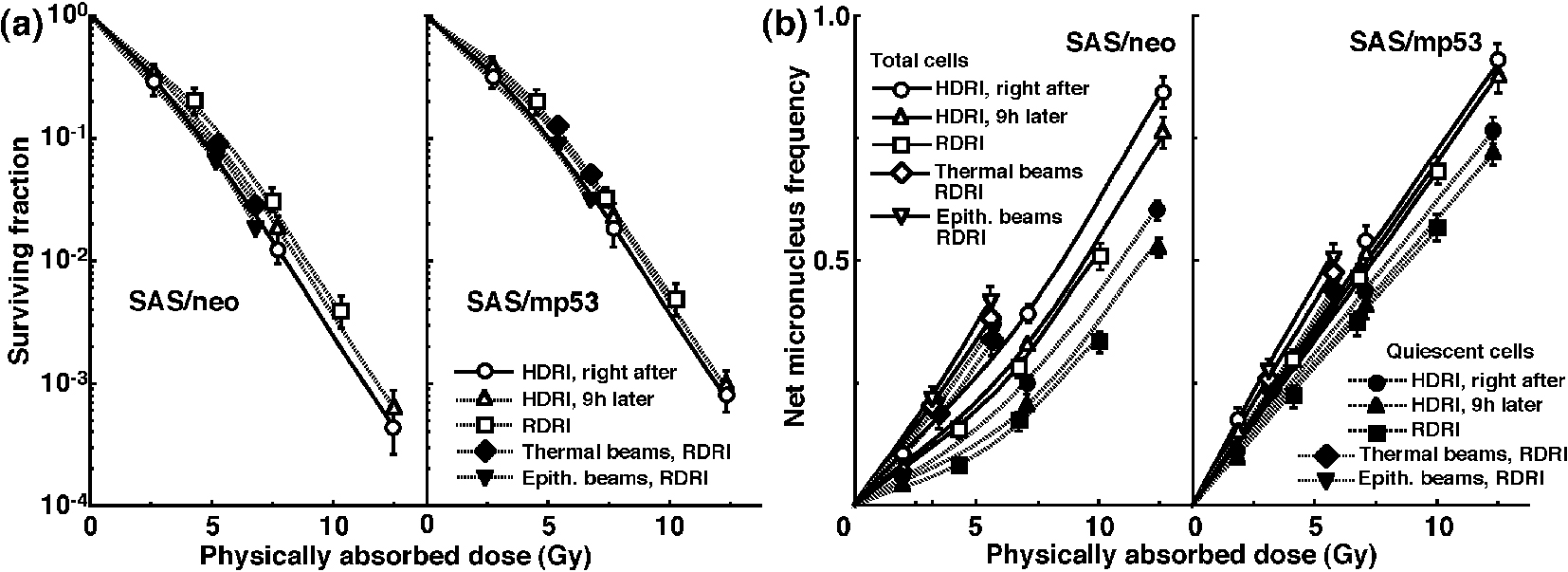
Figure 1. Surviving fractions and net micronucleus frequencies following γ-ray irradiation. The clonogenic cell survival curves for total tumor cell populations and the net micronucleus frequencies for total and quiescent cell populations immediately and 9 h after γ-ray irradiation with high dose-rate irradiation (HDRI) and immediately after γ-ray irradiation with reduced dose-rate irradiation (RDRI) are shown in (a) and (b), respectively. The left and right panels show SAS/neo and SAS/mp53 tumor cells, respectively. Bars represent standard errors (n = 6).

Figure 2. Surviving fractions and net micronucleus frequencies following accelerated carbon-ion beam (18 MeV/μm) irradiation. The clonogenic cell survival curves for total tumor cell populations and the net micronucleus frequencies for total and quiescent cell populations immediately and 9 h after irradiation using accelerated carbon-ion beams with a linear energy transfer of 18 MeV/μm with high dose-rate irradiation (HDRI) and immediately after irradiation with reduced dose-rate irradiation (RDRI) are shown in (a) and (b), respectively. The left and right panels show SAS/neo and SAS/mp53 tumor cells, respectively. Bars represent standard errors (n = 6).

Figure 3. Surviving fractions and net micronucleus frequencies following accelerated carbon-ion beam (50 MeV/μm) irradiation. The clonogenic cell survival curves for total tumor cell populations and the net micronucleus frequencies for total and quiescent cell populations immediately and 9 h after irradiation using accelerated carbon-ion beams with a linear energy transfer of 50 MeV/μm with high dose-rate irradiation (HDRI) and immediately after irradiation with reduced dose-rate irradiation (RDRI) are shown in (a) and (b), respectively. In addition, the cell survival curves for total cells and the net micronucleus frequencies for total and quiescent cells immediately after irradiation using reactor thermal and epithermal neutron beams are also shown in (a) and (b), respectively. The left and right panels show SAS/neo and SAS/mp53 tumor cells, respectively. Bars represent standard errors (n = 6).


